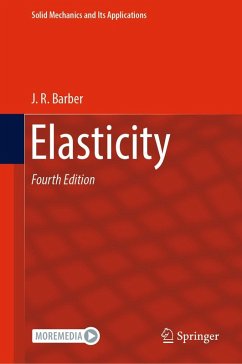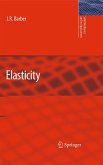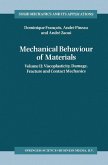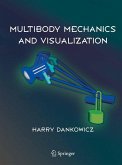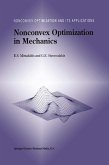This book emphasizes engineering applications of elasticity. This is a first-year graduate textbook in linear elasticity. It is written with the practical engineering reader in mind, dependence on previous knowledge of solid mechanics, continuum mechanics or mathematics being minimized. Examples are generally worked through to final expressions for the stress and displacement fields in order to explore the engineering consequences of the results. This 4th edition presents new and revised material, notably on the Eshelby inclusion problem and anisotropic elasticity.
The topics covered are chosen with a view to modern research applications in fracture mechanics, composite materials, tribology and numerical methods. Thus, significant attention is given to crack and contact problems, problems involving interfaces between dissimilar media, thermoelasticity, singular asymptotic stress fields and three-dimensional problems.
The topics covered are chosen with a view to modern research applications in fracture mechanics, composite materials, tribology and numerical methods. Thus, significant attention is given to crack and contact problems, problems involving interfaces between dissimilar media, thermoelasticity, singular asymptotic stress fields and three-dimensional problems.
Dieser Download kann aus rechtlichen Gründen nur mit Rechnungsadresse in A, B, BG, CY, CZ, D, DK, EW, E, FIN, F, GR, HR, H, IRL, I, LT, L, LR, M, NL, PL, P, R, S, SLO, SK ausgeliefert werden.
'...this book is a very good addition to the available literature on elasticity and can be used as a textbook for the first year graduate course on linear elasticity.' Applied Mechanics Reviews, 45:12 (1992)
'...this book is a very good addition to the available literature on elasticity and can be used as a textbook for the first year graduate course on linear elasticity.' Applied Mechanics Reviews, 45:12 (1992)
From the reviews of the second edition:
"The second edition includes new three chapters on antiplane stress systems, Saint-Venant torsion and bending and an expanded section on three-dimensional problems in spherical and cylindrical coordination systems ... . The topics covered are chosen with a view to modern research applications in fracture mechanics, composite materials, tribology and numerical methods. ... Most of the text should be readily intelligible to a reader with an undergraduate background of one or two courses in elementary mechanics of materials and a rudimentary knowledge of partial differentiation." (Vasily A. Chernecky, Zentralblatt MATH, Vol. 1068 (19), 2005)
"The second edition includes new three chapters on antiplane stress systems, Saint-Venant torsion and bending and an expanded section on three-dimensional problems in spherical and cylindrical coordination systems ... . The topics covered are chosen with a view to modern research applications in fracture mechanics, composite materials, tribology and numerical methods. ... Most of the text should be readily intelligible to a reader with an undergraduate background of one or two courses in elementary mechanics of materials and a rudimentary knowledge of partial differentiation." (Vasily A. Chernecky, Zentralblatt MATH, Vol. 1068 (19), 2005)

